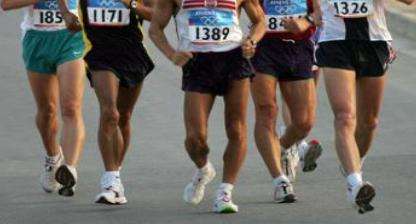The golden standard in SPORTS TRAINING – Maintaining a balance between biomechanics, functional strength and flexibility will be the key to your sports training success and especially for your walking or running regime. Pay attention to small aches and twinges before they develop into more serious injuries and always seek the advice of your Physical Therapist before embarking on any form of intense sports training.
Physical Therapists are functional movement specialists who will plan a training regimen for your individual body design, strengthening your weak areas and stretching your tight areas that will set you on an injury free path to fitness and attaining your goals.
A few tips to pay attention to before you start on your fitness journey:
- Buy the correct running shoes for your feet, don’t skimp on these.
- See your physical therapist to have an assessment of your body’s strengths and weaknesses. Having a safe training plan will serve you well for years to come.
- Have any aches and pains looked at by your physical therapist before they develop into injuries.
- Training correctly – start gradually on your program and then work up to your desired fitness level. As your muscle strength increases so will your cardiovascular strength increase. Learning to pace yourself will give you long term benefits and far less permanent injuries. After a trail run or hilly run your shins and calves may do well to have a day of rest or light upper body training in between.
Some runners injuries to be aware of:
- Patellofemoral pain syndrome – Patellofemoral (puh-tel-o-FEM-uh-rul) pain syndrome is pain at the front of your knee, around your kneecap (patella). Sometimes called “runner’s knee,” it’s more common in people who participate in sports that involve running and jumping. The knee pain often increases when you run, walk up or down stairs, sit for long periods, or squat. Simple treatments — such as rest and ice — often help, but sometimes physical therapy is needed to ease patellofemoral pain. Ref: https://www.mayoclinic.org
- Iliotibial band syndrome – Iliotibial band syndrome is often called IT band syndrome. It is a health problem that causes pain on the outside of the knee. It most commonly happens in athletes, especially distance runners, or those new to exercise.The bones of your knee joint are your thigh bone (femur), your shinbone (tibia), and your kneecap (patella). Your iliotibial band is a strong, thick band of tissue that runs down the outside of your thigh. It extends all the way from your hip bones to the top of your shinbone. When you bend and extend your leg, this band moves over the outer lower edge of your thigh bone. With repeated bending and extending of the knee, this movement of the iliotibial band may irritate surrounding tissues, causing pain. Although anyone can develop it, iliotibial band syndrome is relatively common in distance runners. Ref: https://www.cedars-sinai.org/health-library/diseases-and-conditions/i/iliotibial-band-syndrome.html
- Achilles Tendinopathy – Achilles tendinitis is an overuse injury of the Achilles (uh-KILL-eez) tendon, the band of tissue that connects the calf muscles at the back of the lower leg to your heel bone. Achilles tendinitis most commonly occurs in runners who have suddenly increased the intensity or duration of their runs. It’s also common in middle-aged people who play sports, such as tennis or basketball, only on the weekends. Most cases of Achilles tendinitis can be treated with relatively simple, at-home care under your doctor’s supervision. Self-care strategies are usually necessary to prevent recurring episodes. More-serious cases of Achilles tendonitis can lead to tendon tears (ruptures) that may require surgical repair. Ref: https://www.mayoclinic.org
- Plantar Fasciitis – Plantar fasciitis (PLAN-tur fas-e-I-tis) is one of the most common causes of heel pain. It involves inflammation of a thick band of tissue that runs across the bottom of your foot and connects your heel bone to your toes (plantar fascia). Plantar fasciitis commonly causes stabbing pain that usually occurs with your first steps in the morning. As you get up and move more, the pain normally decreases, but it might return after long periods of standing or after rising from sitting. Plantar fasciitis is more common in runners. In addition, people who are overweight and those who wear shoes with inadequate support have an increased risk of plantar fasciitis. Ref: https://www.mayoclinic.org .
When a niggling pain starts to surface, runners might put off a visit to the therapist, especially when an injury interferes with training. Patients usually seek physical therapy treatment when the pain begins to interfere with their day to day lives. Once it bleeds into daily activities we take for granted like prolonged sitting, squatting, or going down stairs we take note and try to remedy the injury. Rather than reach this point of inflammation and debilitation, it’s far better to seek advice early on in your training.
Running as a sport is a long term fitness activity and should be planned and approached seriously to prevent long term injuries and pain. Let your physical therapist give you the expert advice and training that will give you lifelong enjoyment out of this sport.
Call us at Jason Ferine Physical Therapy and we will be glad to advise you on any of your sports training or injury needs.
Jason Ferine Physical Therapy
2300 Westwood Blvd STE. 100,
Los Angeles , CA 90064
TELEPHONE: 424 365 2083
FAX: 310 943 3532
EMAIL: jfptoffice@gmail.com
jasonferinept@gmail.com



